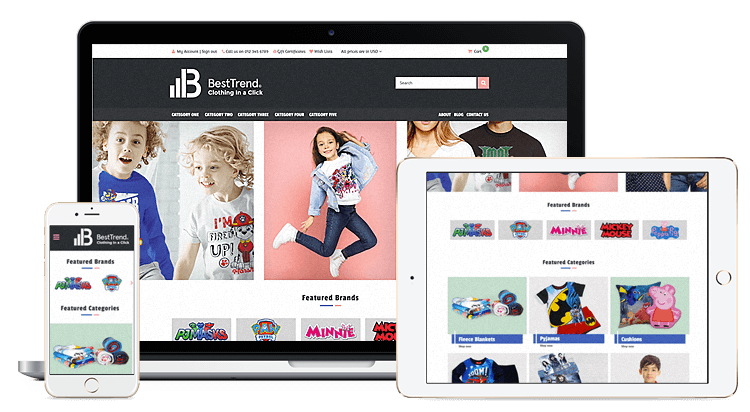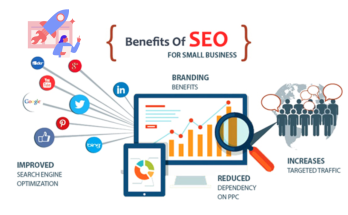
In the ever-evolving digital landscape, creating a user-friendly e-commerce website is crucial for attracting and retaining customers. A seamless, intuitive, and enjoyable shopping experience not only enhances customer satisfaction but also boosts conversions and fosters brand loyalty. In this article, we’ll explore essential elements and best practices for building a user-friendly e-commerce website that keeps customers coming back for more.
1. Intuitive Navigation
Effective navigation is the backbone of a user-friendly website. It helps users find what they’re looking for quickly and easily, reducing frustration and the likelihood of them leaving your site. Here are some tips for creating intuitive navigation:
- Simple and Clear Menu Structure: Organize your menu into clear, logical categories that reflect your product range. Avoid clutter by limiting the number of top-level menu items and using dropdowns for subcategories.
- Search Functionality: Implement a robust search bar with auto-suggestions to help users find products quickly. Consider adding filters and sorting options to refine search results.
- Breadcrumbs: Use breadcrumb navigation to help users keep track of their location within your site, making it easy to backtrack to previous pages.
2. Responsive and Mobile-Friendly Design
With a significant portion of online shopping done on mobile devices, a responsive design is no longer optional. A mobile-friendly e-commerce website ensures a consistent and smooth experience across all devices, including smartphones and tablets. Key considerations include:
- Adaptive Layouts: Use flexible grids and layouts that adjust seamlessly to different screen sizes. Prioritize mobile usability by placing essential elements, like the shopping cart and search bar, within easy reach.
- Touch-Friendly Elements: Ensure that buttons, links, and other interactive elements are large enough to be tapped easily on smaller screens.
3. Fast Loading Times
Website speed is a critical factor in user experience and SEO rankings. Slow-loading pages can frustrate users and lead to higher bounce rates. To optimize loading times:
- Optimize Images: Compress images without compromising quality. Use the appropriate file formats (JPEG for photos, PNG for graphics with transparency) and implement lazy loading to delay loading images until they are needed.
- Minimize HTTP Requests: Reduce the number of elements on your pages, such as scripts and stylesheets, to decrease the number of HTTP requests.
- Use a Content Delivery Network (CDN): A CDN can help distribute your site’s content across various servers, improving load times for users in different geographical locations.
4. Clear Product Pages
Product pages are the heart of your e-commerce website, and they must be designed to convert visitors into customers. Focus on the following elements:
- High-Quality Images and Videos: Provide multiple images from different angles, and consider including product videos to give customers a comprehensive view of the product.
- Detailed Descriptions: Write clear, informative product descriptions that highlight key features, benefits, and specifications. Include keywords naturally to improve SEO.
- Customer Reviews and Ratings: Displaying customer reviews and ratings builds trust and helps potential buyers make informed decisions.
- Clear Call-to-Action (CTA) Buttons: Use prominent and persuasive CTA buttons like “Add to Cart” or “Buy Now.” Ensure they stand out visually and are easy to find.
5. Streamlined Checkout Process
A complicated or lengthy checkout process can lead to cart abandonment. Simplify the checkout process to improve conversion rates:
- Guest Checkout Option: Allow customers to make purchases without creating an account, as mandatory registration can be a barrier to completing a purchase.
- Progress Indicators: Use a progress indicator to show customers how far along they are in the checkout process.
- Minimal Form Fields: Only ask for essential information and use clear, concise labels. Autofill options and address validation can also speed up the process.
- Multiple Payment Options: Offer a variety of payment methods, including credit/debit cards, PayPal, and digital wallets, to accommodate different customer preferences.
6. Strong Security Features
Building customer trust is crucial for any e-commerce site. Implement robust security measures to protect customer data and payment information:
- SSL Certificate: Ensure your website uses HTTPS by obtaining an SSL certificate. This encrypts data transmitted between your site and your customers, enhancing security and trust.
- Secure Payment Gateways: Partner with reputable payment gateways that offer secure transactions and fraud protection.
- Privacy Policy and Trust Badges: Clearly display your privacy policy and any security certifications or trust badges to reassure customers of your commitment to data protection.
7. Effective Customer Support
Providing excellent customer support can significantly enhance the user experience and encourage repeat business:
- Live Chat: Offer live chat support for real-time assistance. It can help address customer questions and concerns quickly, improving satisfaction.
- Comprehensive FAQ Section: Include a well-organized FAQ section covering common questions about products, shipping, returns, and more.
- Contact Information: Make it easy for customers to contact you by providing multiple channels, such as phone, email, and social media.
8. Accessible Design
An inclusive design ensures that your website is accessible to all users, including those with disabilities:
- Alt Text for Images: Provide descriptive alt text for all images to assist visually impaired users using screen readers.
- Keyboard Navigation: Ensure that your website can be navigated using a keyboard alone, which benefits users with mobility impairments.
- Readable Fonts and Colors: Use readable fonts and sufficient color contrast to make text easy to read for everyone, including those with visual impairments.
Conclusion
Creating a user-friendly e-commerce website is essential for attracting and retaining customers in a competitive online marketplace. By focusing on intuitive navigation, mobile-friendliness, fast loading times, clear product pages, a streamlined checkout process, strong security features, effective customer support, and accessible design, you can provide a seamless and enjoyable shopping experience. Remember, a user-friendly website not only boosts customer satisfaction but also enhances SEO rankings, driving more organic traffic and ultimately increasing sales. Start implementing these best practices today to build a successful and thriving e-commerce business.
